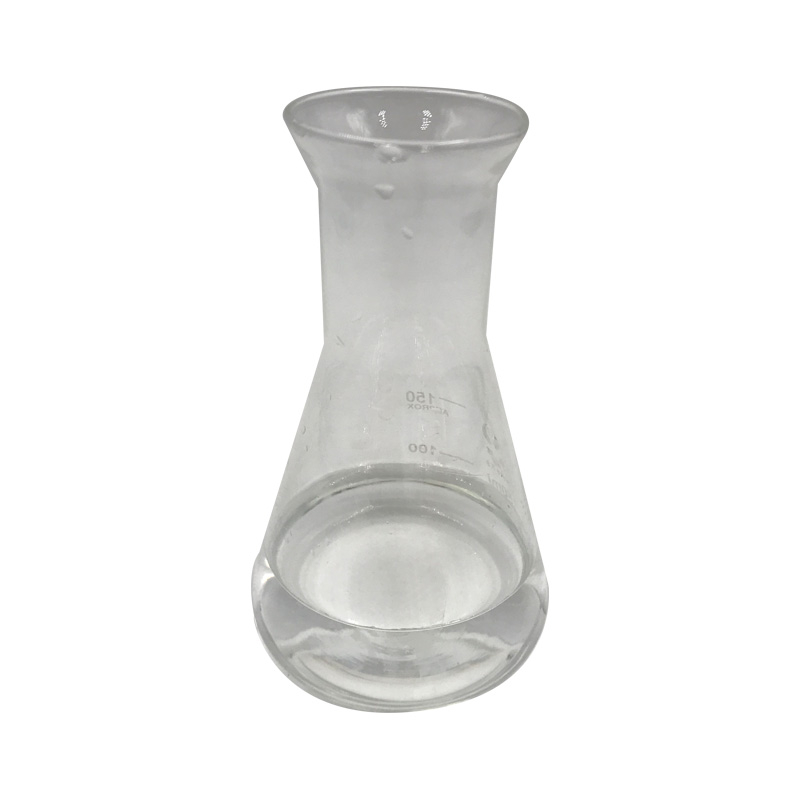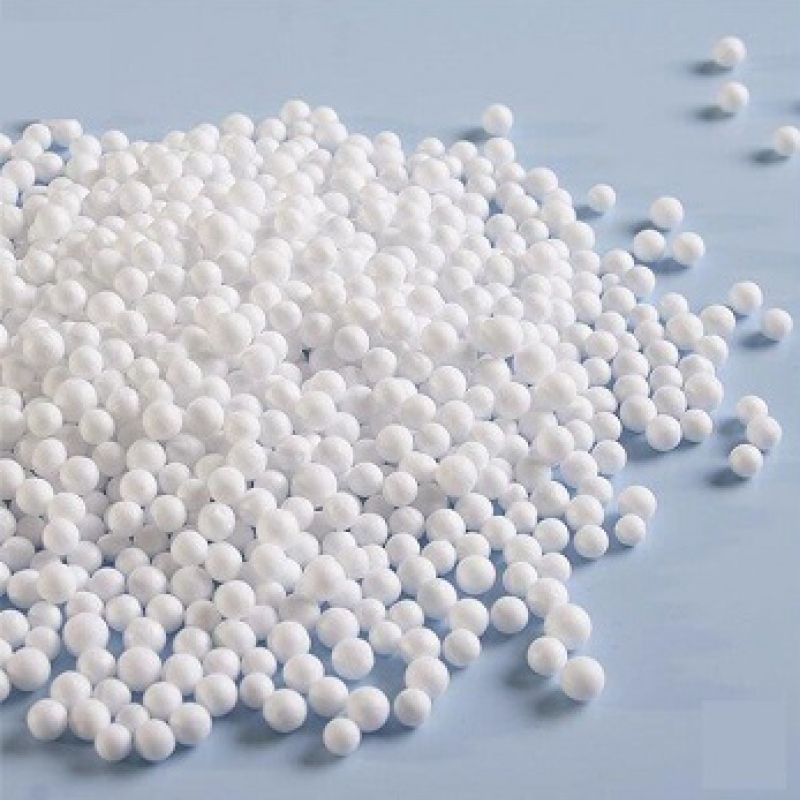Products Description of Calcium chloride CAS#10048-52-4Anhydrous calcium chloride is a white porous frit or granule. It is easy to deliquesce. The melting point is 782℃, the density is 2.15g/cm3, the boiling point is higher than 1600℃, it is easily soluble in water and releases a lot of heat, and it is also soluble in ethanol and acetone. The most common is calcium chloride hexahydrate CaCl2·6H2O, colorless trigonal crystal, easy to deliquesce, bitter and salty taste, density 1.71g/cm3.
Contact Now
Products Description of Calcium chloride CAS#10043-52-4Calcium chloride, CaC12, is colorless deliquescent solid that is soluble in water and ethanol. It is formed from the reaction of calcium carbonate and hydrochloric acid or calcium hydroxide and ammonium chloride. It is used in medicine, as an antifreeze, and as a coagulant.Calcium chloride (CaCl2) has many uses. It is used as a drying agent and to melt ice and snow on highways, to control dust, to thaw building materials (sand, gravel, concrete, and so on).
Contact Now
Calcium chloride CAS# 10043-52-4Product Description:At our company, we pride ourselves on offering high-quality Calcium Chloride with the chemical formula CaCl2. Our 99% Calcium Chloride is meticulously produced to meet the demands of various industries, ensuring optimal performance and efficiency.
Contact Now
Products Description of CALCIUM TITANATE CAS#12049-50-2Calcium titanate is an inorganic substance with the chemical formula CaTiO3. It belongs to the cubic crystal system and is a basic inorganic dielectric material with excellent dielectric, temperature, mechanical and optical properties.
Contact Now
Products Description of Calcium hypochlorite CAS#7778-54-3The chemical formula of bleaching powder is CaCl2·Ca(ClO)2·2H2O. It is a white powdery substance. Its composition varies with the preparation conditions. It is generally a hydrated complex salt composed of calcium hypochlorite, calcium chloride and unreacted calcium hydroxide. Its active ingredient is calcium hypochlorite. Bleaching powder has strong oxidizing, corrosive and irritating properties. It can decompose when it comes into contact with water, ethanol or inorganic acid.
Contact Now
Bulk Calcium Chloride CAS#10043-52-4Product Description:At our company, we pride ourselves on offering high-quality Calcium Chloride with the chemical formula CaCl2. Our 99% Calcium Chloride is meticulously produced to meet the demands of various industries, ensuring optimal performance and efficiency.
Contact Now
Products Description of CALCIUM SACCHARIN CAS#6485-34-3CALCIUM SACCHARIN is a white crystal or white crystalline powder with no or slight fragrance. It has a very strong sweet taste, and the sweetness of its dilute solution is about 500 times that of sucrose. Saccharin calcium can be dissolved in 1.5 ml of water and ethanol.CALCIUM SACCHARIN Chemical PropertiesOdorat 100.00?%.
Contact Now
Products Description of Calcium gluconate CAS#299-28-5Calcium gluconate is the calcium salt of gluconic acid. It is a white crystalline or granular powder with a melting point of 201°C.
Contact Now
Calcium chloride(food grade)CAS#10043-52-4Product Overview:Introducing our high-quality Calcium Chloride (Food Grade) with the CAS#10043-52-4, a versatile compound that is essential in a variety of applications across the food, industrial, and manufacturing sectors.
Contact Now
Calcium Chloride (CAS#10043-52-4) - High-Quality Solution for Various IndustriesProduct OverviewCalcium Chloride (CaCl2), a high-purity industrial and food-grade compound, offers a versatile solution for applications across multiple industries.
Contact Now
Products Description of Calcium carbonate CAS#471-34-1Calcium carbonate occurs in nature as limestone in various forms, such as marble, chalk, and coral. It is probably the most widely-used raw material in the chemical industry. It has numerous applications, primarily to produce cement, mortars, plasters, refractories, and glass as building materials. It also is used to produce quicklime, hydrated lime and a number of calcium compounds. It is produced either as powdered or precipitated calcium carbonate. The latter consists of finer particles of greater purity and more uniform size.
Contact Now
Products Description of Rhodium Chloride CAS#20765-98-4Hydrated rhodium trichloride is a chemical substance with the molecular formula RhCl3·nH2O. It is a reddish brown crystalline powder, easily soluble in water, hydrochloric acid, acetone, alcohol and alkaline solution.
Contact Now
Monopotassium phosphite CAS#13977-65-6Potassium dihydrogen phosphite, a chemical with the molecular formula KH2PO3, can be used as a direct bactericide and complexing agent for calcium and magnesium ions in industrial circulating water.
Contact Now
Products Description of Benzyltributylammonium chloride CAS#23616-79-7Benzyltributylammonium chloride is a chemical substance with the molecular formula C19H34ClNBenzyltributylammonium chloride Chemical PropertiesMelting point 155-163 °C (lit.)Boiling point 466.93°C (rough estimate)density 0.9523 (rough estimate)refractive index 1.6000 (estimate)storage temp. Sealed in dry,Room Temperatureform Crystalline Powdercolor White to ivoryWater Solubility solubleSensitive HygroscopicBRN 3776210Stability:Stable. Combustible.
Contact Now
Products Description of Stannous chloride dihydrate CAS#10025-69-1Stannous chloride, chemical formula SnCl2, is also called tin dichloride. There are anhydrous and hydrated substances. The former is transparent crystals with a melting point of 246℃, a boiling point of 652℃, and a relative density of 3.95. It is soluble in water and oxidized in the air to form insoluble chloride oxides. It is hydrolyzed in water to form basic stannous chloride 〔Sn(OH)Cl〕precipitate.
Contact Now
CACL2 CAS#10043-52-4Product Description:At the heart of industrial and commercial applications is calcium chloride, a chemical compound with the molecular formula CaCl2 and registration number CAS#10043-52-4.
Contact Now
Products Description of Cyanuric chloride CAS#108-77-0Cyanuric chloride is an organic compound with the molecular formula C3Cl3N3. It is an important fine chemical product with a wide range of uses. It is an intermediate in the pesticide industry and a raw material for manufacturing reactive dyes. It can be used as various auxiliaries in organic industrial production. Agents, such as fluorescent whitening agents, textile anti-shrunk agents, surfactants, etc., are rubber accelerators and one of the raw materials used in the manufacture of explosives for national defense.
Contact Now
Products Description of Methyl Tributyl Ammonium Chloride CAS#56375-79-2Methyltributylammonium chloride, also known as tributylmethylammonium chloride, has a molecular formula of C13H30ClN, a molecular weight of 235.84, and a CAS registration number of 56375-79-2.
Contact Now
Products Description of Tetraethylammonium Chloride CAS#56-34-8 Tetraethylammonium chloride is an organic compound with the chemical formula C8H20ClN.
Contact Now
Products Description of Calcium Formate CAS#544-17-2Calcium formate is an organic substance with the molecular formula C2H2O4Ca. It is used as a feed additive and is suitable for all types of animals. It has acidification, anti-mildew, antibacterial and other effects.
Contact Now
Products Description of Calcium Ammonium NitrateCAS#15245-12-2Calcium ammonium nitrate is a nitrogen fertilizer made by melting ammonium nitrate with a certain proportion of limestone and dolomite powder. The ingredients are a mixture of NH4NO3, CaCO3 and MgCO3. Calcium ammonium nitrate contains 21% to 26% nitrogen (N), and is grayish white or light yellow granules or powder. The aqueous solution is weakly alkaline.Calcium ammonium nitrate is the world's most soluble calcium-containing chemical fertilizer.
Contact Now
Acetic acid formula CAS#64-19-7Product Overview:Glacial acetic acid, scientifically known as ethanoic acid, is a colorless, corrosive liquid that plays a pivotal role in various industrial processes. With the chemical formula CH₃COOH and the unique identifier CAS#64-19-7, it is a versatile compound that is widely recognized for its effectiveness in a multitude of applications.Market Relevance:In the dynamic industrial sector, the demand for high-quality chemicals is ever-increasing.
Contact Now
SCANDIUM CHLORIDE CAS#10361-84-9Overview:Scandium Chloride, with the chemical formula ScCl3 and CAS number 10361-84-9, is a significant industrial chemical known for its unique properties and wide range of applications.
Contact Now
Products Description of Polyisobutylene CAS#9003-27-4Calcium phosphate tribasic (C3161) is plant cell culture tested (0.2 mg/ml) and is appropriate for use in plant cell culture experiments. Calcium phosphate tribasic is utilized to engineer new biomaterials for applications such as bone grafts and fillers. Si-substituted hydroxyapatite (Si-HAp) nanopowder can be incorporated in biodegradable polymer composites or deposited on biocompatible surfaces similar to pure HAp nanopowder (cat. no. 677418).
Contact Now


































